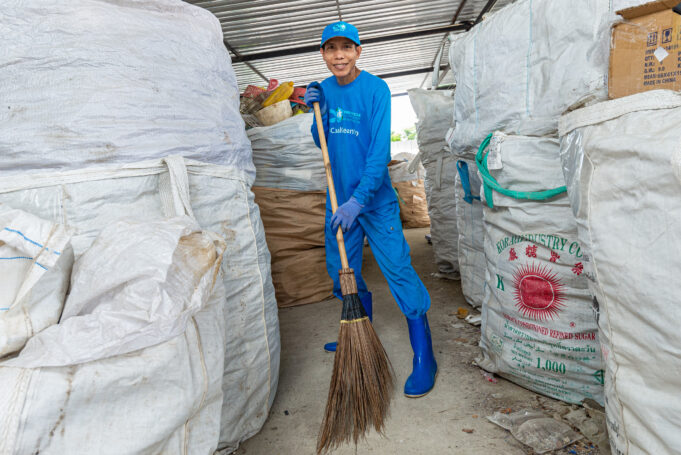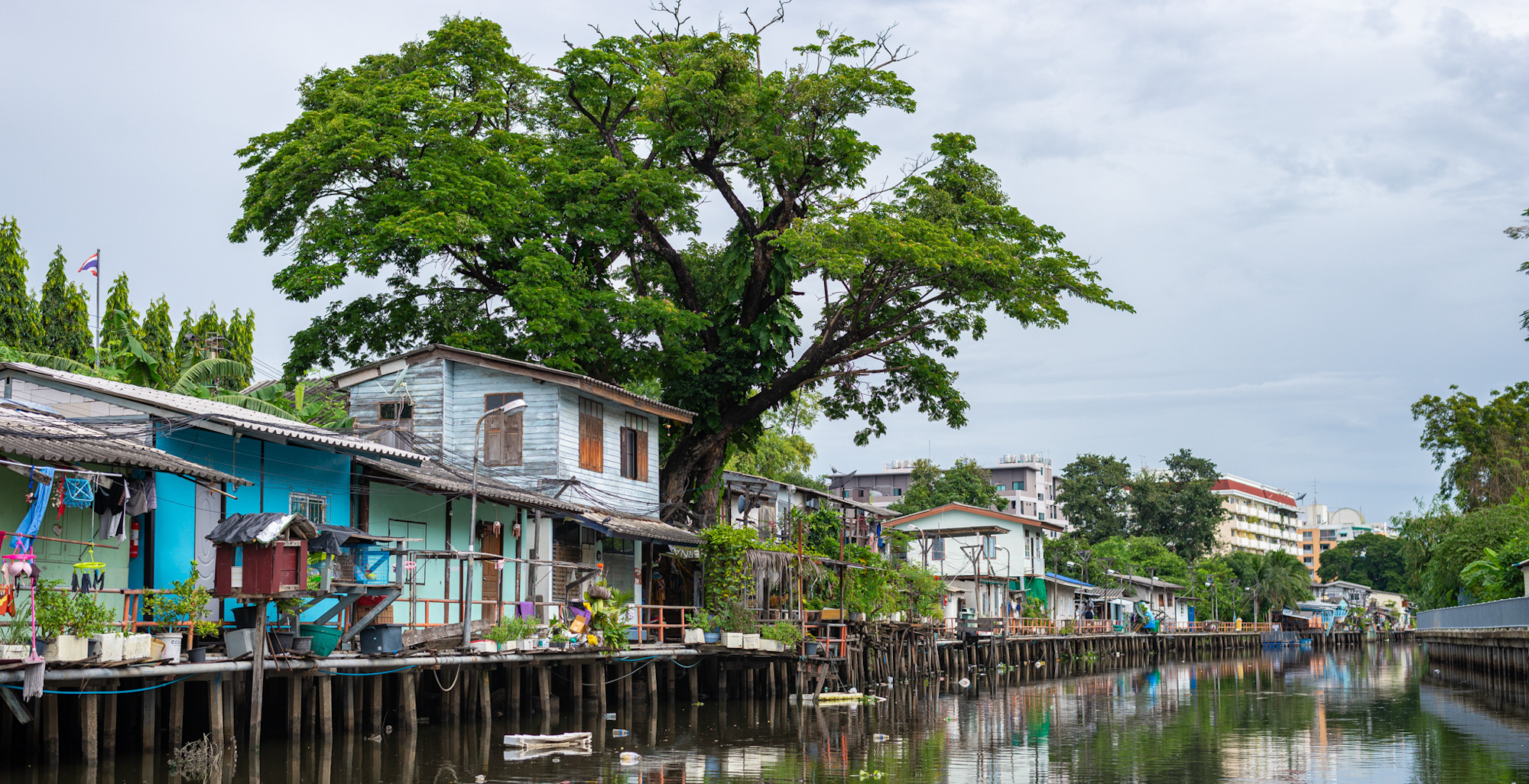A day in the life of a TerraCycle Foundation cleanup
Part 1: The Boat Crew
Every morning at 7am our boat crew begins their day. Bangkok is very hot so an early start lets the team get through part of the day before it gets too hot. Their commute is short as they all live in the community along the canal. They meet at K. Sam’s place, he is our boat captain, and is a retired community leader who has been working to keep the canal clean for many years. Everyone loads onto the boat and they begin their journey.
The boat crew has 3 people: 1 “captain” or driver, and 2 collectors. The collectors stand near the front on each side of the front of the boat with long nets. They collect debris floating in the water and direct the captain to areas where the waste is trapped or collected along the sides of the canal. Every day the waste is different in its amounts and type of waste collected. Many factors such as weather, flooding, time of year, events, construction, and other factors determine the type of waste collected.
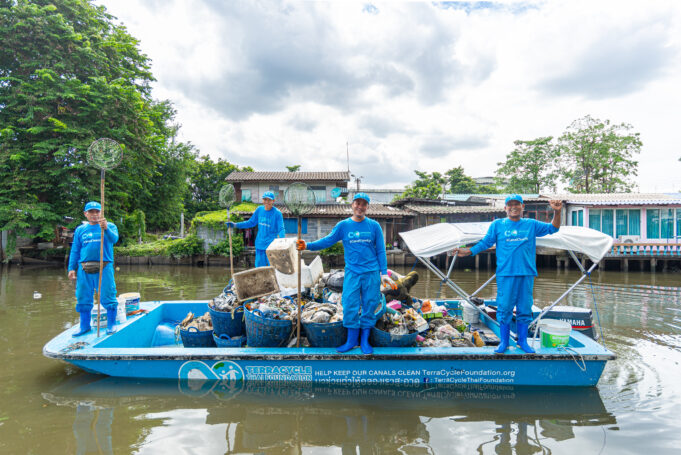
In the Lat Phrao canal, we currently operate 3 river plastic traps, but as mentioned we also collect directly from the canals, and other natural and man-made barriers. We have nicknamed our devices for the communities they are placed in. “Lat Phrao 80” is our first stop. The team secures the boat to the device and begins collecting the waste that has been collected since the device was cleaned the day before. The river plastic traps are shaped like a large box with holes in it to allow water to pass through, but plastics and other waste is captured. There are also a set of long arms on the front of the device to capture waste from a larger area. We cannot block the whole canal as it is used by local communities for transportation. The river plastic trap also collects material mid-water, not just at the surface. The canals range from 1-1.5 meters deep, so the devices go down almost a meter. Collecting from the device is hard work, and volunteers that come to help us are often surprised how fast and efficient the team works. Since the project began, we have tried different methods, equipment and techniques and have found a system that is simple, works well, and gets everything done on time each day.

Each trap takes between 20-40 min to collect and clean, and can contain between 300-800 kg of waste, which the teams collect each day. Since our river plastic traps are in very public and busy areas, it’s important that they are kept as presentable as possible, even though they are filled with trash. Once the team has finished collecting, they will return to our MRC (Material Recovery Center). This is where the waste is dried, sorted, and processed for recycling. As always, along the way the team collects along the canal as there is new waste everyday. The team repeats this process for “Wanghin 61” and “Army 11” (Yes it’s nicknamed for nearby army barracks).
Once they have completed all 3 devices, it’s usually time for lunch. Their favorite spot is under a tree next door to our MRC, they get a little shade and they have their “picnic” area set up. After lunch they will either complete their collections or join the sorting team to help with sorting and other tasks. There are often lots of projects to keep them busy; the environment is hard on equipment so there are always nets to mend, equipment to repair, or something to upgrade. This week we had lockers donated to us for the team, so they are cleaning and painting them.
So that’s a typical day for the boat crew, but we still have our land team, or sorting team. While every member is cross trained in other roles, they each have their “home station” and particular tasks or jobs they are responsible for.
Part 2: The Sorting Team
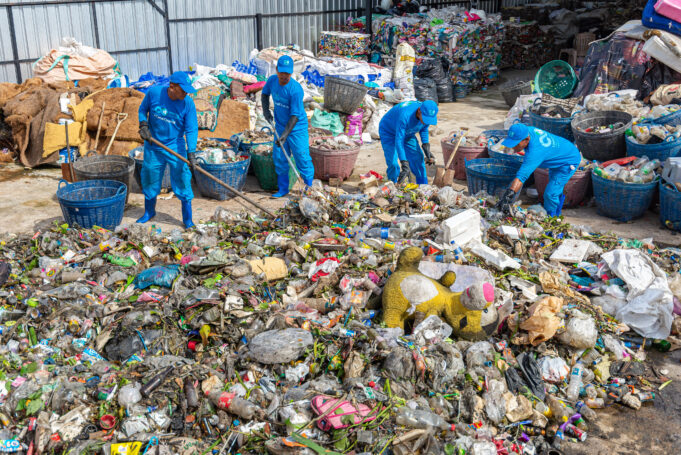
Once the boat team arrives at the MRC, the boat is unloaded and each basket is measured and recorded according to which device or area it was collected. Then the waste is spread out across our sorting area to dry for 24 hours. This allows any additional water weight to evaporate or drain off and makes sorting easier.
The MRC team of 3-4 people arrives by boat or motorbike each morning and begins to sort and process the collected waste from the previous day’s collection. On the first pass they remove everything recyclable. They then separate the organic waste from non-recyclable materials and weigh and record all the material before placing it in a compactor bin that will be sent to a waste-to-energy facility. As we are a canal/river cleanup that is committed to zero waste to landfill, we must find a way to process all the waste collected regardless if it is recyclable or not. This is one of the biggest challenges as what people think we collect, and what we actually collect is quite different. If the waste was mostly bottles, bags, and straws, with some plants, as many people think it is, it would be much easier, but the reality is unfortunately quite different. While we do collect thousands of bottles, bags, and straws, we also collect everything else you can imagine and many you cannot. Remember everything people buy or use eventually ends up as garbage, and everything that is garbage eventually ends up in the canals and rivers.
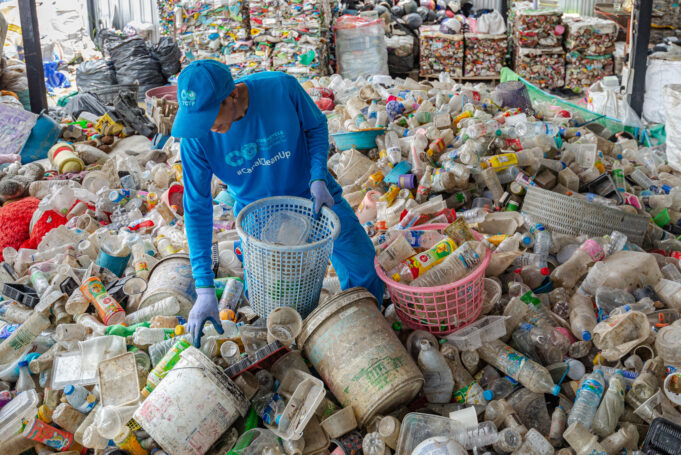
Some of the most common items we collect besides plastics are: Shoes, clothing, backpacks, purses, luggage, helmets, toys, diapers, spray cans, light bulbs, TVs, furniture, sports equipment, tires, motorcycle parts, mattresses, and stuffed animals. Some of these can be recycled with special processes or recyclers, but they are usually not accepted by most recyclers. Not to mention, as we collected them from the canal, they tend to be dirtier than if they were collected from land-based garbage. Another factor that people often forget is that many of these products hold chemicals or contain toxic substances, that when dumped into the canal, they can be released into the water and make their way to the ocean.
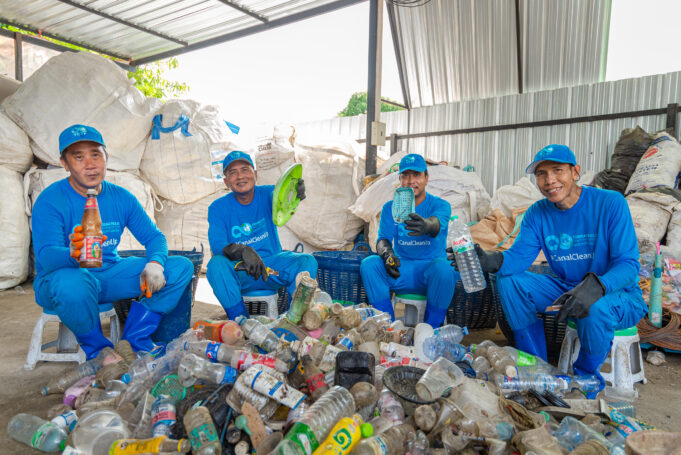
In the afternoon, the team will switch to other duties, such as compacting waste into plastic bales to prepare for shipping, or cleaning drink boxes and flattening them for drying and baling. With so many waste streams to process and recycle there is always something to prepare and process. They also record data and images at every step along the way. This helps us understand what types of waste we are getting, so we can also develop programs to help change waste management behaviors to prevent those items from being dumped in the future.
During the COVID lockdown, we continued to operate as most of our team arrived by boat. During this time we saw a large increase in takeout food containers, usually made from polystyrene. Although steps have been made to ban these, they continue to be in heavy use in Thailand still. What’s worse is there is no recycling infrastructure for this type of plastic in Thailand currently, so our only option is to send it to waste-to-energy. Although they are being diverted from landfills and the ocean, it would be significantly better if food vendors switched to an organic, reusable, or more easily recycled packaging.
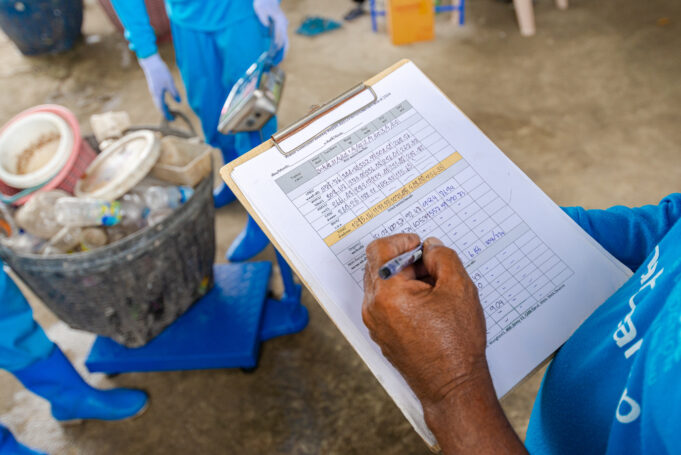
Coming to the end of each day, each team completes their daily reports and sends them to our office. Then our work area is cleaned and prepared for the next day. Just because we collect a lot of waste in our efforts to stop plastics and waste from entering the ocean doesn’t mean we have to work in a garbage dump.
So, although our processes seem simple, they are all part of a daily routine that ensures we are able to manage the large volume of waste we collect every day. It’s not that we are without challenges from the weather, flooding, malfunctioning equipment, changes with processors, etc., but by having a clear program each day with a strong well-trained team, we can overcome the challenges and deliver on our promise to clean up the waterways, canals, and rivers of Thailand.
